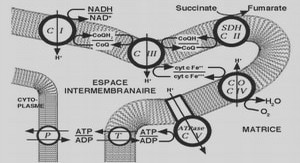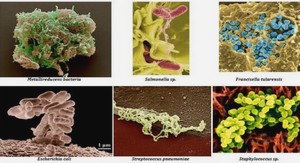Complete genome for Salmonella enterica subsp. enterica serotype Derby associated with the pork sector in France
DISCUSSION
The three ST71 Derby clades obtained in this study were correlated with the geographic distribution of the strains (Fig. 1). The first clade contained two strains from the USA, the second had one strain from Asia and two from French patients, one of whom reported travel to Thailand, and the third included all strains from Europe (France, Germany, Poland, Italy and 118 the UK). The results of this study showed that the ST71 S. Derby isolated from turkeys in the UK were genetically related to the strains isolated in the other MSs. Approximately 36% of the world’s turkey meat production originates in Europe, with only five countries producing 80% of this: Germany, France, Poland, the UK, Italy and Spain (15). The data on S. Derby in turkeys reported by EFSA in 2014 and 2015 for the UK (1, 2) may have been due to the particular attention paid by this country to the incidence of S. Derby related to white meat and the tendency of this serovar to become persistent in poultry houses (16). The UK has indeed been the second leading MS for the consumption of white meat after Spain since 2000 (15, 17). Moreover, more than 22 million turkeys are produced for meat each year in the UK and this large-scale activity is dominated by a small number of specialist producers (18). More than half of the farms (>50%) in the UK have a capacity of 50,000 animals (more than 2,400 m²), compared with only 6.7% of those in France (ITAVI, 2013). In France, the incidence of S. Derby in the turkey animal sector is higher than in Gallus gallus in keeping with the European trend. This supports the hypothesis that the “Derby turkey clone” is not confined to the UK but is also circulating within other MSs, suggesting the possibility of an earlier common source. Data from the Anses Salmonella Network (jointly with the National Reference Laboratory) show that this serovar is the most frequently isolated from pigs and turkeys in the animal sector in France. S. Derby ST71 has been shown to be responsible for human infections in France. Between 2014 and 2015, Institut Pasteur (National Reference Centre for Salmonella in France) reported six patients infected with S. Derby ST71 representing 2% of the infections due to S. Derby. Of these six patients, two were likely to have contracted the infection while travelling abroad (strains 201402459 and 201407219 in Fig. 1) and the remaining four in France. The strains isolated from these four patients were clustered with the French food strains 2015LSAL02005, 2014LSAL03350, 2014LSAL03694, 2014LSAL01779 (13 SNPs with an SD of 8) and 2014LSAL05133 (9 SNPs with an SD of 1). No resistance gene was detected in the French strains responsible for the four French human infections or the five related food strains in the cluster. Nevertheless, the French strain 2014LSAL02325 isolated from turkey meat presented genes involved in resistance to aminoglycosides, sulphonamides and tetracyclines. These genes were also carried by Italian and English strains isolated from patients and turkeys. The Italian strains isolated from turkeys revealed mutations involved in resistance to fluoroquinolones. Most human Salmonella infections are self-limiting gastrointestinal illnesses and do not require any antimicrobial treatment. However, in rare cases, infection may spread and lead to severe enteric disease or invasive infection. In such life-threatening cases, rapid and effective antimicrobial treatment is of utmost importance to prevent poor outcomes in patients. Fluoroquinolones are widely recommended to treat severe Salmonella infections in adults (21). The emergence of a fluoroquinolone-resistant lineage of the S. Derby ST71 European clade in turkey flocks observed in Italy is worrisome. It should be noted that 24% of the S. Derby isolated from fattening turkey flocks in Europe in 2016 were resistant to fluoroquinolones. They were identified in Spain and the UK (21). Interestingly, in the clade associated with Asia, the French human strain 201407219 isolated in 2014 and the strain BCW_2672 isolated from patients in Taiwan in 2000 shared the same 119 genes conferring resistance to ampicillin, chloramphenicol, streptomycin, sulfamethoxazole and tetracycline. These two genomes showed the presence of a Salmonella genomic island (SGI-1) as already described in S. Derby by Beutlich et al. (22). Strain 201407219 displayed a partial sequence of the sul1 gene. Remarkably, those two genomic islands were different from the SGI-1C recently identified in two ST40 French strains isolated from pork meat (14). Additionally, PHASTER identified the presence of a wide variety of prophages in the foodassociated isolates compared to the clinical isolates. We were able to identify three profiles within the EU clade, the first characterised by the phage GF-2 (Edward_GF_2_NC_026611) (France, Poland and UK genomes), the second by the phages GF-2 and SEN34 (Salmon_SEN34_NC_028699) (Germany, Italy and UK genomes) and the third by the phages GF-2 and HP1 (Haemop_HP1_NC_001697) (France genomes). Interestingly, with regards to the turkey isolates, we were able to identify only two of the three profiles described above: the profile GF-2 characterising the French and English isolates and the profile GF-2 + SEN34 characterising the German and Italian isolates. The sequence of the GF-2 phage was present in 90% (27/30) of the genomes analysed and in all of the EU genomes. Interestingly, the GF-2 phage, a myovirus lytic bacteriophage, was described for the first time by Yasuike et al. in 2015 (23). It was isolated from a cultured Japanese flounder that succumbed to Edwardsiella tarda, a gram-negative Enterobacteriaceae that is the most serious pathogen in both marine and freshwater fish farms worldwide. Since viruses are indeed the most abundant biological entity in aquatic ecosystems (24-27), it is possible that Salmonella Derby may be a natural host of this bacteriophage. Further infectivity tests are needed to confirm this hypothesis. While the phylogenomic analysis performed on the core genome SNP was able to combine 25 genomes into one ST71 European clade, differences between those genomes were highlighted by the analysis of targeted elements from accessory genomes. Antimicrobial resistance genes and the presence of phages allowed us to distinguish different genomic signatures revealing a diversity of profiles that seemed related to geographic or animal origins. This study demonstrated the presence of an S. Derby clone ST71 circulating in Europe, not confined solely to the UK, apparently well adapted to turkey flocks and responsible for human salmonellosis. SNP analysis on the core genome is an undeniably efficient phylogenomic tool for clustering epidemic clones or identifying emerging successful clones. This study also highlighted the power of user-friendly web-based applications such as Resfinder and PHASTER, not requiring any highly qualified bioinformatics expertise, to readily rule out potential sources of contamination during foodborne outbreak investigations. Lastly, SNP analysis of the core genome enabled three S. Derby ST71 clades to be identified, one for EU, one for Asian and one for US strains. Analysis of the targeted elements from accessory genomes enabled the identification of potentially useful genomic signatures for monitoring transmission routes for foodborne microbiological hazards along the food chain.
MATERIAL AND METHODS
Whole genome sequencing. To investigate genetic diversity within the S. Derby lineage isolated in poultry, the strain 2014LSAL01779 isolated in 2014 from Gallus gallus carcasses in Brittany (France) presenting the MLST profile ST71 was sequenced with Illumina Hiseq (i.e. paired-end read sequencing) and PacBio® (i.e. long read sequencing) technologies and used as reference genome for the downstream analyses. Illumina Hiseq sequencing was performed by the Institut du Cerveau et de la Moelle épinière (ICM) (Pitié-Salpêtrière Hospital, Paris) (www.icm-institute.org) using NextEra XT technology and PacBio® sequencing was performed by Genoscreen (Lille). The quality of the Illumina and PacBio® reads was examined using fastQC V0.11.5 (28). Prinseq V0.20.4 (29) was used to select Illumina long reads of good quality (no undefined bases, phred > 30, length > 60). The PacBio® reads were assembled using SMRT analysis v2.3.0. In SMRT analysis, HGAP V3.0 (30) was invoked to correct the sub-reads (length > 1000 bases, read-Score 0.8) and Celera V8.3 (31) was used for the assembling (sub-reads length > 500 bases, deep coverage > 25x). Samtools V1.5 (32) was used to map the Illumina short paired-end reads against the PacBio assembly to correct potential assembly mistakes and to determine the depth of the final assembly. The final deep coverage obtained was 140x. A unique contig of 4.86Mb was obtained with GC-content of 51.12%. The genome was annotated using Prokka (33); it contained 4499 CDS and 90 tRNA. The reference genome as well as all the other genomes were paired-end sequenced as described above (i.e. Hiseq sequencing) and processed using the iVARCall2 workflow (34) excluding duplications and applying a second alignment around small insertions/deletions. Accession number. The complete genome sequence of S. enterica subsp. enterica serovar Derby strain 2014LSAL01779 included in this work has been submitted to NCBI under accession no. CP026609. Worldwide S. Derby genome selection. Information about the analysed S. Derby genomes has been listed in Table S1. Apart from 16 genomes taken from the ANSES (14), Institut Pasteur and HAPA collections, the other full genomes with conventional taxonomic information were collected across public Enterobase databases (http://Enterobase.warwick.ac.uk/species/senterica/search_strains). Phylogenetic analysis. The phylogenetic analysis was performed with the CSIPhylogeny tool provided by the Center for Genomic Epidemiology (CGE) (https://cge.cbs.dtu.dk/services/CSIPhylogeny/) (35) using the maximum likelihood criterion and GTR-gamma model. The phylogenetic tree was visualised using iTOL (36). Statistical analyses. The non-normality of the data (i.e. pairwise SNP differences) was checked using the Shapiro test (37) with R from the pairwise matrix generated by the iVARCall2 workflow described above. Equality of variances for pairwise SNP differences was rejected with the Fisher test (38). Distributions of pairwise SNP differences were compared with a Kolmogorov-Smirnov test (KS-test) (39). 121 Identification of acquired resistance genes. The whole panel of genomes was analysed using the ResFinder 2.1 application (40) on the CGE server. The threshold for reporting a match between a gene in the ResFinder database and the input S. Derby genome was set at 90% identity over at least 3/5 of the length of the resistance gene. For strains 201407219 and BCW_2672, SGI-1 coding sequences (NCBI: AF261825.2) were extracted and blasted against the dataset with the BioNumerics BLAST tool. The complete genomic sequence of SGI-1 was investigated using the BioNumerics alignment and sequence visualisation tools. Detection and characterisation of phages and prophages. Each of the 30 assembled genomes was analysed by PHASTER to identify the presence of prophages and their integrase genes (41). Only prophages identified as “intact” or “questionable” were considered. The identity of all intact prophage sequences detected by PHASTER was confirmed by BLAST (42, 43).




